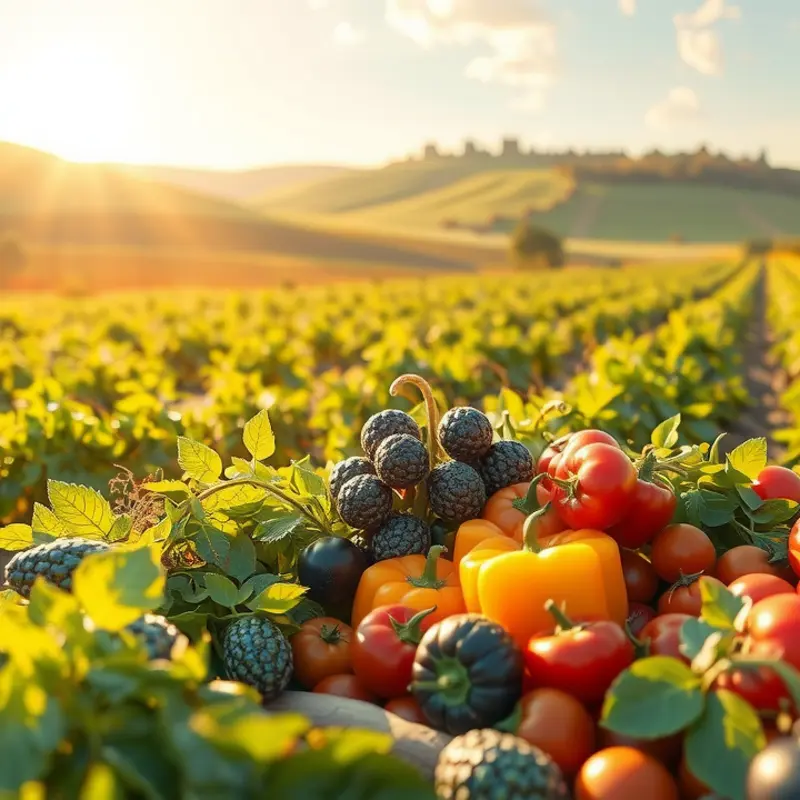In today’s health-conscious environment, washing produce safely is essential for minimizing waste while maximizing food quality. Understanding how to properly wash, store, and manage your fruits and vegetables not only keeps harmful bacteria at bay but also enhances the freshness and longevity of your food. This guide will provide practical tips that enable you to keep your kitchen organized and reduce waste, ensuring a healthier lifestyle for you and your family.
The Importance of Washing Produce

Washing produce is not just a step towards cleaner eating; it is a critical measure in food safety. Properly washing fruits and vegetables reduces the risk of consuming harmful contaminants such as dirt, pesticides, and bacteria. Despite the assumption that running water is sufficient, a deeper understanding of best practices can enhance both safety and the longevity of produce.
Fruits and vegetables often bear unseen threats. Dirt may contain pathogens, while pesticides used in farming can linger on the surface. Harmful bacteria, like Salmonella or E. coli, are a major concern and can cause severe illness. Despite treatment before reaching the store, these products encounter various surfaces and hands, adding to potential contamination.
Rinsing with water is a good start but isn’t foolproof. Water alone may not remove all pesticide residues or wax coatings. For effective cleaning, consider using a solution of vinegar and water; mixing one part vinegar with three parts water creates a solution that aids in breaking down pesticides and bacteria. However, household cleaning agents and soap are not recommended. These can leave residues of their own, making them unsafe for washing produce.
Different types of produce require varying washing techniques. Leafy greens like spinach and lettuce should be soaked in water, swished around, then thoroughly rinsed. This method loosens dirt and pathogens from the folds. For apples and other firm produce, scrubbing with a clean brush under running water helps remove stubborn contaminants. Delicate fruits, such as berries, should be gently rinsed in a colander to prevent damage.
Adopting these washing practices not only ensures safe consumption but also extends the product’s shelf life. Moisture can lead to spoilage, so it’s crucial to dry produce thoroughly before storage. After washing, use a clean cloth or paper towel to dry the produce, particularly for items going back into the refrigerator.
While enhancing food safety, efficient washing also promotes mindful eating by connecting consumers with their food preparation processes. This aligns with broader strategies in healthy eating habits. For more insights on integrating these practices into everyday life, you might explore easy approaches to plant-based eating.
Ultimately, washing fruits and vegetables is a simple yet powerful step towards better health. By adopting effective techniques and being cautious about the cleaning solutions used, consumers can greatly reduce risks and enjoy fresher, safer produce.
Effective Methods for Washing and Storing Produce

Proper washing and storage of produce are vital steps in maintaining food safety and freshness. Different types of produce require specific cleaning techniques and tools to ensure contaminants and pesticides are minimized.
For leafy greens, start by removing any damaged or wilted outer leaves. Submerge the leaves in a basin filled with cold water and gently agitate them. This helps dislodge dirt and debris. A salad spinner is particularly effective for drying greens, ensuring they don’t harbor moisture that can lead to mold.
When dealing with root vegetables like potatoes, carrots, and radishes, use a brush with firm bristles to scrub the surface under cold running water. This helps remove dirt clinging to the skin. Thicker-skinned varieties may need a bit more pressure, but take care not to abrade the surface too roughly to avoid bruising.
Fruits with smooth, edible peels, such as apples and grapes, benefit from a quick rinse under cool water. Consider using a vinegar solution—one part vinegar to three parts water—to soak fruits for a few minutes. This method effectively reduces bacteria and pesticide residues. Rinse thoroughly afterward to ensure no vinegar taste remains.
Storing washed produce correctly is equally essential for keeping them fresh longer. Moisture is often an enemy of freshness, so the first step is to dry your produce thoroughly post-washing. For greens, layer dry paper towels in a storage container to absorb excess moisture, and change them if they become damp. Root vegetables can be stored in a dark, dry place to maintain firmness and flavor.
Utilizing reusable containers keeps washed produce organized and environmentally friendly. Opt for containers with adequate ventilation or use linens to wrap items that can tolerate slight humidity, maintaining an ideal balance. Understanding the specific storage needs, like refrigeration for delicate greens or a cool pantry for root vegetables, prevents premature spoilage and waste.
Efficient storage also involves recognizing appropriate produce pairings in storage spaces. For instance, some fruits emit ethylene gas as they ripen, which can accelerate spoilage in nearby produce. Keeping apples separate from leafy greens prolongs the shelf life of both.
Practices like regularly assessing your stored produce and rotating older items to the front help minimize waste. Reducing food waste not only saves money but also supports a more sustainable kitchen environment. Explore eco-smart kitchen storage techniques to enhance your sustainable practices.
By mastering these washing and storage methods, you can ensure your produce remains safe, fresh, and full of flavor, ultimately supporting a healthier eating routine.
Final words
Safe produce washing is an essential practice that enhances food safety and quality in your home. By implementing the proper techniques for washing and storing your fruits and vegetables, you can effectively reduce waste and ensure a healthier diet for you and your family. Remember, the little steps—like using the right washing methods and optimal storage solutions—can make a big difference in your kitchen management. Embrace these practices to enjoy fresh and nutritious meals every day.







